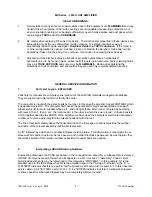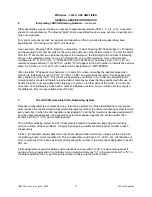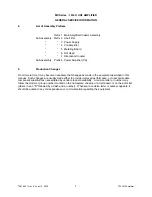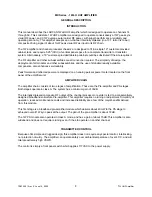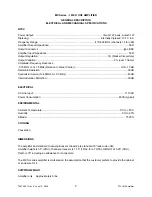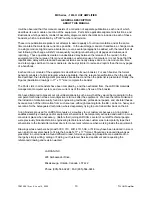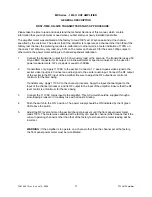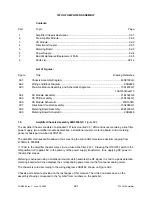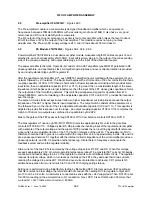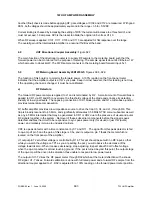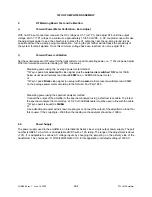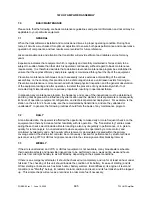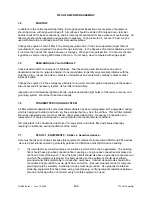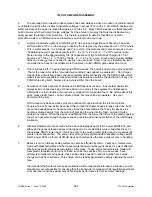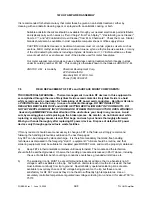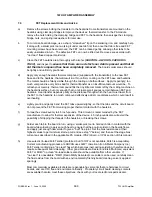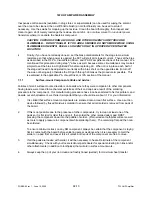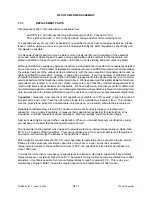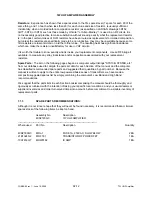
1W UHF AMPLIFIER ASSEMBLY
PUB99-92 rev 1: June 19, 2000
92-6
1
W UHF Amplifier
7.4
MONTHLY
In addition to the normal operational tests, thorough physical inspection of every piece of equipment
should be made, with all power turned off. All surfaces should be dusted off or wiped down, terminal
boards checked for loose connections, and all components examined for any evidence of overheating. Air
filter media should be inspected and replaced if necessary. High pressure air, not over 20 psi, may be
used with discretion to dislodge dust from inaccessible places.
Change the engine oil and oil filter in the emergency alternator, if it has been operated longer than its
manufacturer's recommended time since this was last done. In the absence of recommendations, don't let
it run more than about 100 hours between oil changes. When put into perspective, 100 hours is the time
logged by a vehicle running 6000 miles at 60 mph. Oil is cheap, when compared with engine parts.
7.5
SEMI-ANNUALLY and ANNUALLY
Check all external RF connections for tightness. Test the antenna and transmission line with a
transmission test set or network analyzer if one is available, to identify any potential problems with the
antenna or line. Inspect and clean contacts on all switches and contactors; carefully redress contact
surfaces if pitted.
Change the engine oil in the emergency alternator to summer or winter grade, depending on the season.
Also inspect and if necessary replace, its fuel filter and air filters.
Inspection and maintenance (tighten all bolts, replace obstruction light bulbs) of the tower, antenna, and
grounding system, should be conducted annually.
7.6
TRANSMITTER COOLING SYSTEM
Air filter material supplied with some transmitter cabinets has been impregnated with a polyester coating,
which is designed to attract and hold very fine particles that may be in the air flow. This air filter material
should be inspected every month or oftener, and replaced when dirty. Frequency of inspection and
replacement, of course, will depend on your particular local environmental conditions.
All cooling fans in the transmitter are Rotron
™
or equivalent, and all are fitted with sealed bearings
requiring no lubrication during the lifetime of the motor.
7.7
STATIC 1, EQUIPMENT 0: Static vs. Sensitive devices...
Care must be taken at all times because this equipment contains static-sensitive CMOS and FET devices.
Here is a brief tutorial on static, particularly pertinent to CMOS and other MOS device handling:
1.
It is important to avoid surroundings or situations in which static can be generated. The building
floor should have grounded conductive floor coverings, or a grounded conductive mat placed on
the floor in front of the bench. Then, the bench itself should also have a grounded conductive mat
on which the equipment is placed. Anybody working on the equipment should wear either a
grounded wrist strap (preferably) or conductive overshoes. Vacuum cleaner tools should all be
conductive and grounded to avoid static from air motion. (Vacuum cleaners made for computer
servicing would be suitable). Soldering iron tips must be grounded. Use properly maintained
soldering equipment that has a three wire, grounding plug, verifying low path resistance between
ground and the tip with an ohmmeter every time this equipment is used.


